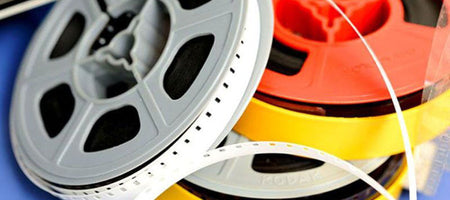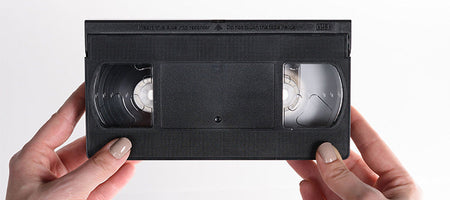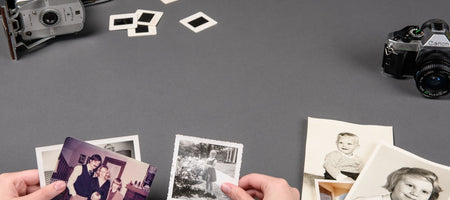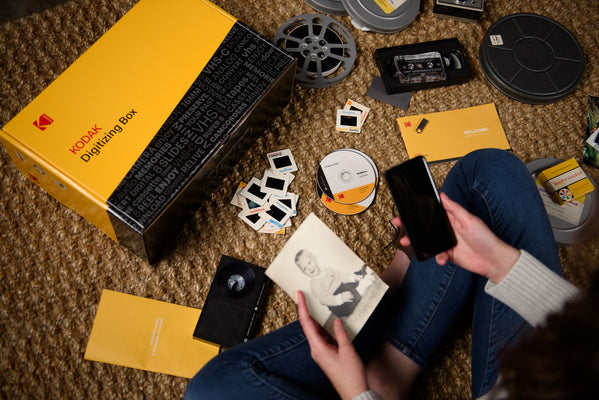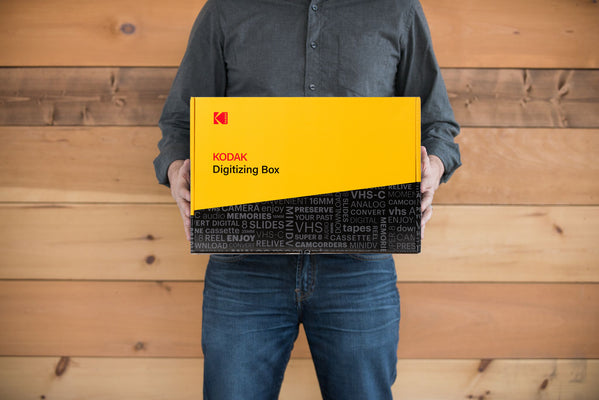Chances are, a person born after 1995 may have never handled a VHS tape. For those of us who remember the golden days of the VHS, or Video Home System, we also remember the impatience of waiting for a VHS to rewind, pressing the record button on the VCR to tape our favorite movies from television, or even setting a timer to record our favorite TV show while we went out.
If only we could have predicted Digital Video Recorders (DVR).
The VHS as a media device dominated the home movie industry from the 1970’s to the early 2000’s. Multiple iterations of the device, the VHS, VHS-C (Compact) and S-VHS (Super) saw the rise and fall of the VHS industry over the course of 30 years, as it transitioned from cutting-edge technology, to an obsolete and bulky device that was eventually replaced by the DVD, the DVR, and then streaming movies and TV episodes stored in the cloud.
The Best Thing Since Film Reels
Magnetic tape for recording became a popular alternative to film in the 1950’s, but this technology was expensive and generally unavailable for mass consumption. It wasn’t until the 1970’s that JVC, the Victory Company of Japan, released magnetic tape cassettes for video recording, but when they did, consumers jumped on the opportunity to view movies and record from the comfort of their own living rooms. This new technology was the VHS, or Video Home System. For years VHS duked it out with Betamax, developed by Sony, for market domination, and as history tells us, VHS claimed over half of the North American market, becoming a household name.
The Nuts and Bolts
While the glory of home viewership was a magical new experience, the VHS and VCR followed a set of procedures to ensure quality playback and prevent unspooling. The cassette consists of two small spools of magnetic tape, including the supply reel and the take-up reel. The VCR (Videocassette Recorder) Pulls the supply reel around the rotating video head drum with the help of pins and rollers on either side. Due to the loose M-shape this creates in the magnetic tape, this process is referred to as M-lacing. Each 180 degree spin corresponds to the processing of one frame of video. The head drum rotates at a rate of 1798.2 rpm in NTSC machines and 1500 rpm in PAL machines. A cassette is able to record about 4 hours of content in NTSC and 5 hours in PAL, where the magnetic tape is at its thinnest. However, most magnetic tape was made thicker than regulation called for to prevent breaking and tearing in the tape. Thus, we remember the long films where two VHS tapes were required to view the entire feature, like Gone With the Wind and Titanic!
Consumers Take Control
Perhaps the best thing about the VHS was the consumer’s ability to take control of when and how they viewed their favorite television programs. The freedom to record and replay your favorite sitcom or the evening news provided a liberty that had been unavailable to viewers. Of course, television networks saw this as a major disruption in their industry. Commercials, paid for by businesses and corporations, could now be skipped with the VCR’s fast forward function. Viewership could no longer be determined by considering how many people were tuning in during air time. Nevertheless, the popularity of the VHS continued to rise and remained the preferred media for home viewing until the advent of the DVD in 2008.
Reliving Those Memories
You may find an old stash of tapes, pop one into that dusty VCR to find a combination of family videos and old recordings from TV. This is because all VCR’s are equipped with a component called an Erase Head. This piece of the machinery allows you to record over previously taped content. Without the Erase Head, there would be no guarantee that the previously recorded Wheaties commercials would fully disappear beneath beneath the ballet recital or Friday night football game. Due to the rise in consumer purchase of handheld camcorders, the S-VHS showed a slight increase in sales with its superior picture quality.
Regardless of format, you’re bound to find at least a few these plastic time capsules in your collection. Whether you locate that old cache of VHS gold to find episodes of Happy Days or The Muppet Show, a precious wedding video or baby’s first steps, you can thank a VHS for preserving your memories for decades past. And send those old tapes in to KODAK Digitizing today so you can preserve them for decades to come.

